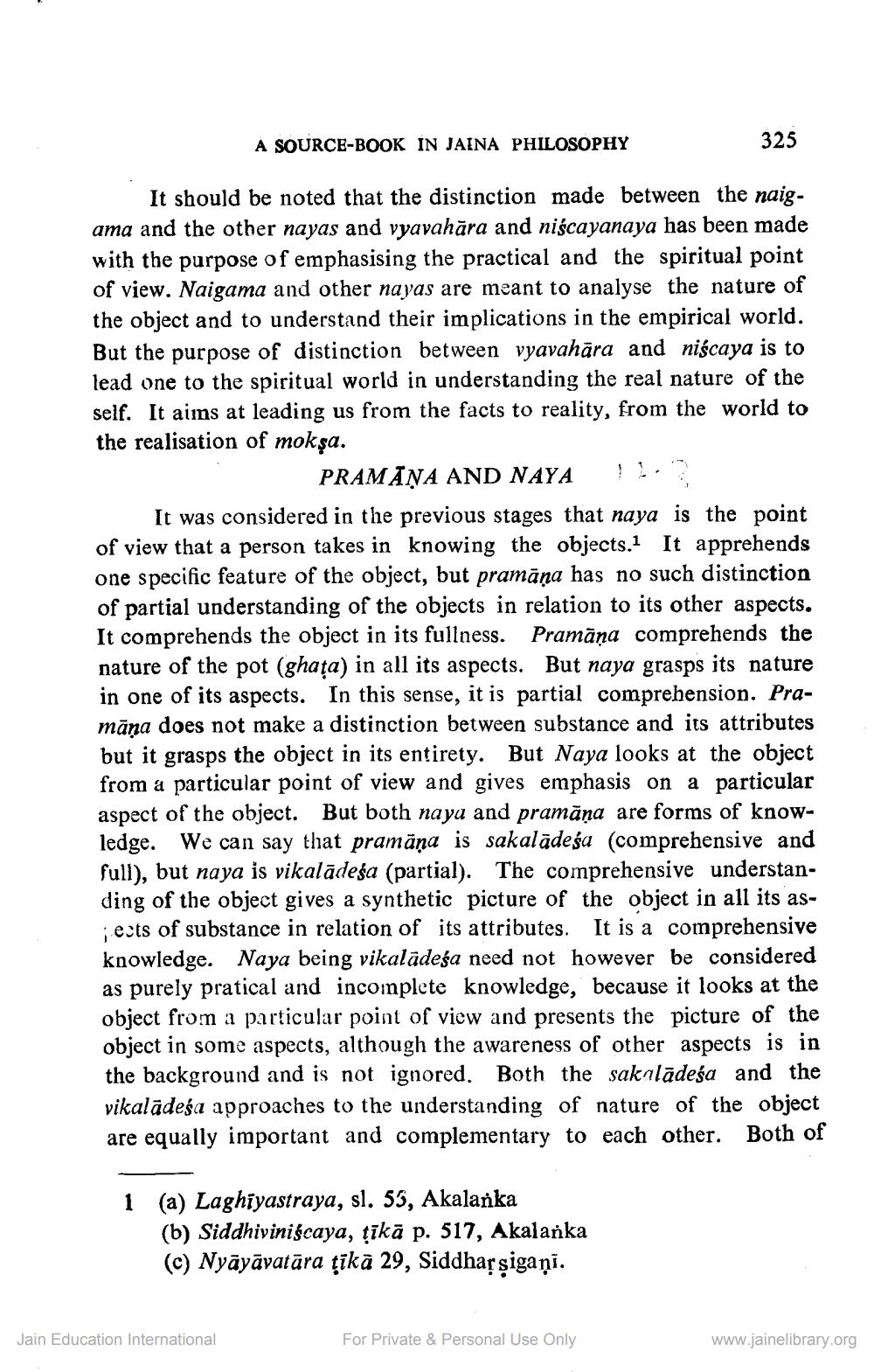________________
A SOURCE-BOOK IN JAINA PHILOSOPHY
325
It should be noted that the distinction made between the naigama and the other nayas and vyavahāra and niscayanaya has been made with the purpose of emphasising the practical and the spiritual point of view. Naigama and other nayas are meant to analyse the nature of the object and to understand their implications in the empirical world. But the purpose of distinction between vyavahāra and niscaya is to lead one to the spiritual world in understanding the real nature of the self. It aims at leading us from the facts to reality, from the world to the realisation of mokşa.
PRAMĀŅA AND NAYA !!.? It was considered in the previous stages that naya is the point of view that a person takes in knowing the objects.1 It apprehends one specific feature of the object, but pramāna has no such distinction of partial understanding of the objects in relation to its other aspects. It comprehends the object in its fullness. Pramāņa comprehends the nature of the pot (ghața) in all its aspects. But naya grasps its nature in one of its aspects. In this sense, it is partial comprehension. Pramāna does not make a distinction between substance and its attributes but it grasps the object in its entirety. But Naya looks at the object from a particular point of view and gives emphasis on a particular aspect of the object. But both naya and pramāņa are forms of knowledge. We can say that pramāna is sakalādeśa (comprehensive and full), but naya is vikalādesa (partial). The comprehensive understanding of the object gives a synthetic picture of the object in all its asjects of substance in relation of its attributes. It is a comprehensive knowledge. Naya being vikaladeśa need not however be considered as purely pratical and incomplete knowledge, because it looks at the object from a particular point of view and presents the picture of the object in some aspects, although the awareness of other aspects is in the background and is not ignored. Both the sakalādeśa and the vikalādeśa approaches to the understanding of nature of the object are equally important and complementary to each other. Both of
1 (a) Laghiyastraya, sl. 53, Akalanka
(b) Siddhiviniscaya, țīkā p. 517, Akalanka (c) Nyāyāvatāra tikā 29, Siddhassigaņi.
Jain Education International
For Private & Personal Use Only
www.jainelibrary.org




